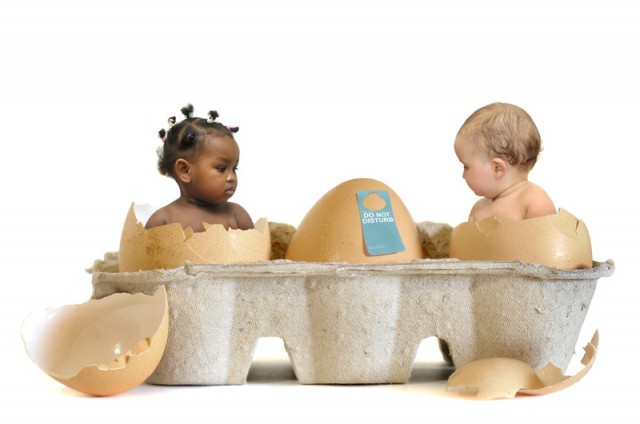Scrambled eggs? How fertility and household chemicals mix
September 10, 2012
What’s with the “new normal”? No, I’m not talking about that new Modern Family-wannabe on NBC, I’m talkin’ 9 year olds with boobs and line-ups at fertility clinics. Yes, screwy fertility is the subject of the latest Ecoholic column (you can give it a read here). From menarche (your first period) to menopause to men’s, um, performance problems, our bodies are definitely breaking old norms – are household chems partly to blame? I explore the link in the column but, as always, there are few things I didn’t get to. For one, the cocktail effect. The EU’s Environment Agency recently came out and said the soup of endocrine disrupting aka hormone disrupting chemicals in cosmetics/food/drugs/household products/pesticides may be contributing to falling fertility, rising cancers, diabetes and obesity. Health Canada, on the other hand, told the Suzuki Foundation when it petitioned HC about the govs lack of action on this front: “relaaax, it’s just a few trace chems.”
Let’s look at some bonus stats. Here in Canada, infertility rates have nearly doubled since the last time the nation’s basal temperature was taken in 1992 (when 8.5% of 18-44 year olds were deemed infertile, up already from 5% in 1984). Oh sure there are a lot of older women trying to get their baby on these days, but push that aside and we’re still having more problems. In 1984 5% of 18-29 year olds were infertile, now we’re talking 7 to 13%. Male infertility and early menopause are also on the rise. And when immigrant girls move to Canada, they too start to get their periods before than their cousins back home. So what’s up??
The mystery factors: whether we’re talking early puberty or adult infertility, there are a lot of potential factors at play. Obesity, smoking, STDs like chlamydia, heavy boozing and chemo can all effect fertility. We know that all of the above compromise our health in complicated ways but things like non-stick chemicals and spray tans shouldn’t. They should be non-issues, totally risk-free. Alas, nope. A lot of them are hormone disruptors that, yes, mess with our hormones – from nonstick chems blamed for early menopause and infertilility to plastic chems tied to low sperm counts.
Here’s a quick list of hormone disrupting chems to minimize wherever you can in your life:
- Bisphenol A (largest source: canned food – go for fresh food instead)
- Phthalates (in soft vinyl, synthetic fragrance – go for unscented)
- Mercury, lead and other heavy metals (avoid fresh tuna/big fish and get your water tested for lead)
- Flame retardants (in dust from older stuffed furniture, electronics – dust/vacuum often!)
- Non-stick chemicals (found in some popcorn bags, fast food wrappers)
- Beef hormones (eat hormone-free, naturally raised meat.
- Animal fats (Trim the fat – it stores persistent chems. That means no pork belly for you, hipster/foodies!)
- Gymes (found carpet cleaners – use natural, nontoxic solutions ie Pink Solution)
- Pesticides (stick to all natural pest-control)
- Fake spray tans (just say no – of course, all Hollywood would turn white overnight if they took this advice)

